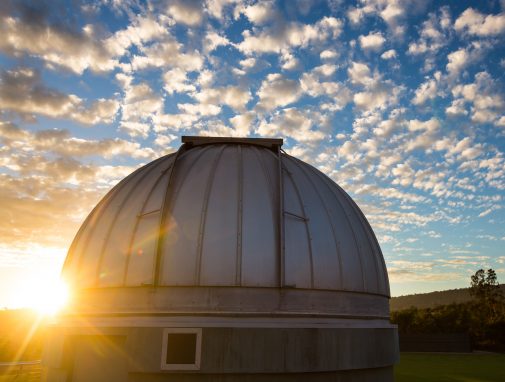Jupiter Remains in Focus for Viewing
By
Westmont

Jupiter, the largest planet in the solar system, is the subject of this month’s free public viewing of the stars Friday, April 17, beginning at 7:30 p.m. at the Westmont Observatory. The best viewing generally occurs later in the evening. In case of inclement or overcast weather, please call the Telescope Viewing Hotline at (805) 565-6272 and check the Westmont website to see if the viewing has been canceled.
“Depending on weather conditions, we should be able to see a lot of detail on Jupiter’s surface through Westmont’s 8-inch refractor,” says Thomas Whittemore, Westmont instructor of physics.
Several galaxies in Leo, the lion, will also be visible. “The two very bright galaxies are the Leo Triplet,” he says. “These two groups of three are bright enough that Messier was able to see them through his small refractor telescope in Paris.”
Stargazers may also enjoy the wonderful, bright globular cluster Messier 3 in Canes Venatici. “This cluster is real eye candy,” Whittemore says. “It contains about a half-million stars that are older than our sun. The cluster is about 8 billion years old and about 34,000 light-years from Earth.
The observatory houses the Keck Telescope, a 24-inch F/8 Cassegrain reflecting instrument with Ritchey-Chretien optics. It is one of the most powerful telescopes on California’s Central Coast. The Westmont observatory opens to the public every third Friday of the month in conjunction with the Santa Barbara Astronomical Unit, whose members bring their own telescopes to the college for the public to gaze through.
The Keck Telescope is housed in the observatory between Russell Carr Field and the track and field/soccer complex. Free parking is available near the baseball field.
Filed under
Academics, Campus Events, Faculty and Staff, Featured, Observatory, Press Releases